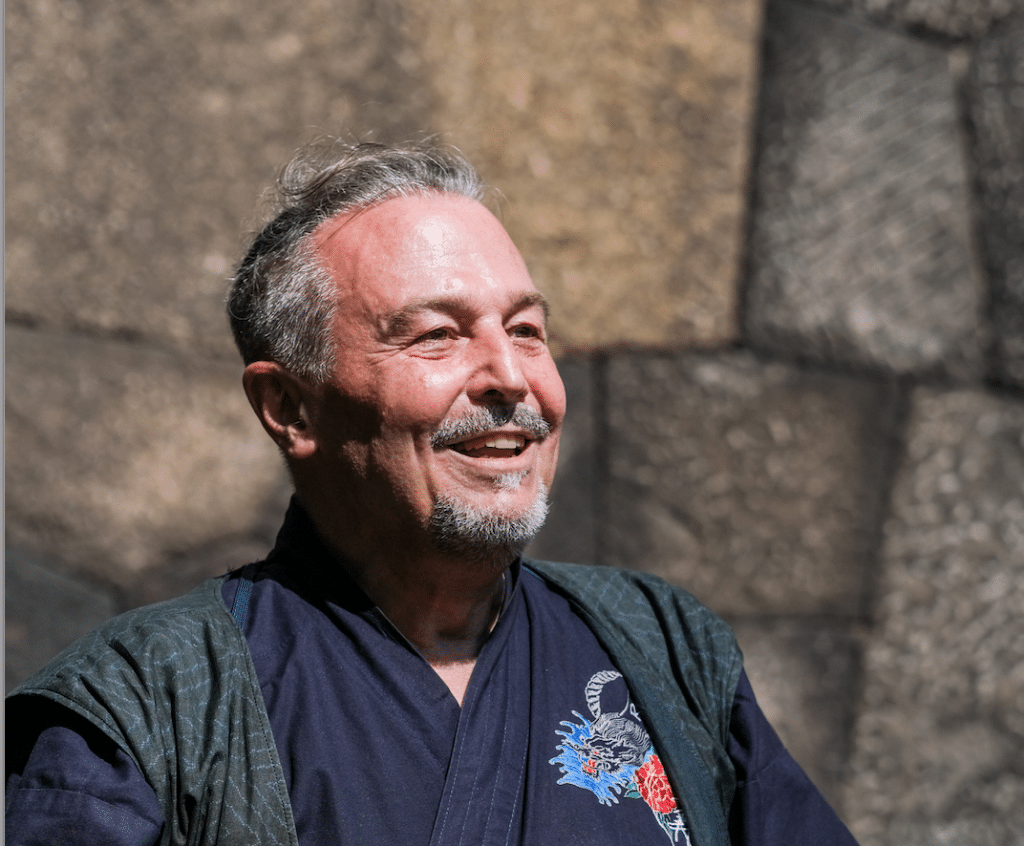The exhibition was held in Tokyo’s Keio Plaza Hotel, and will be moving onto museums in Nara Prefecture.
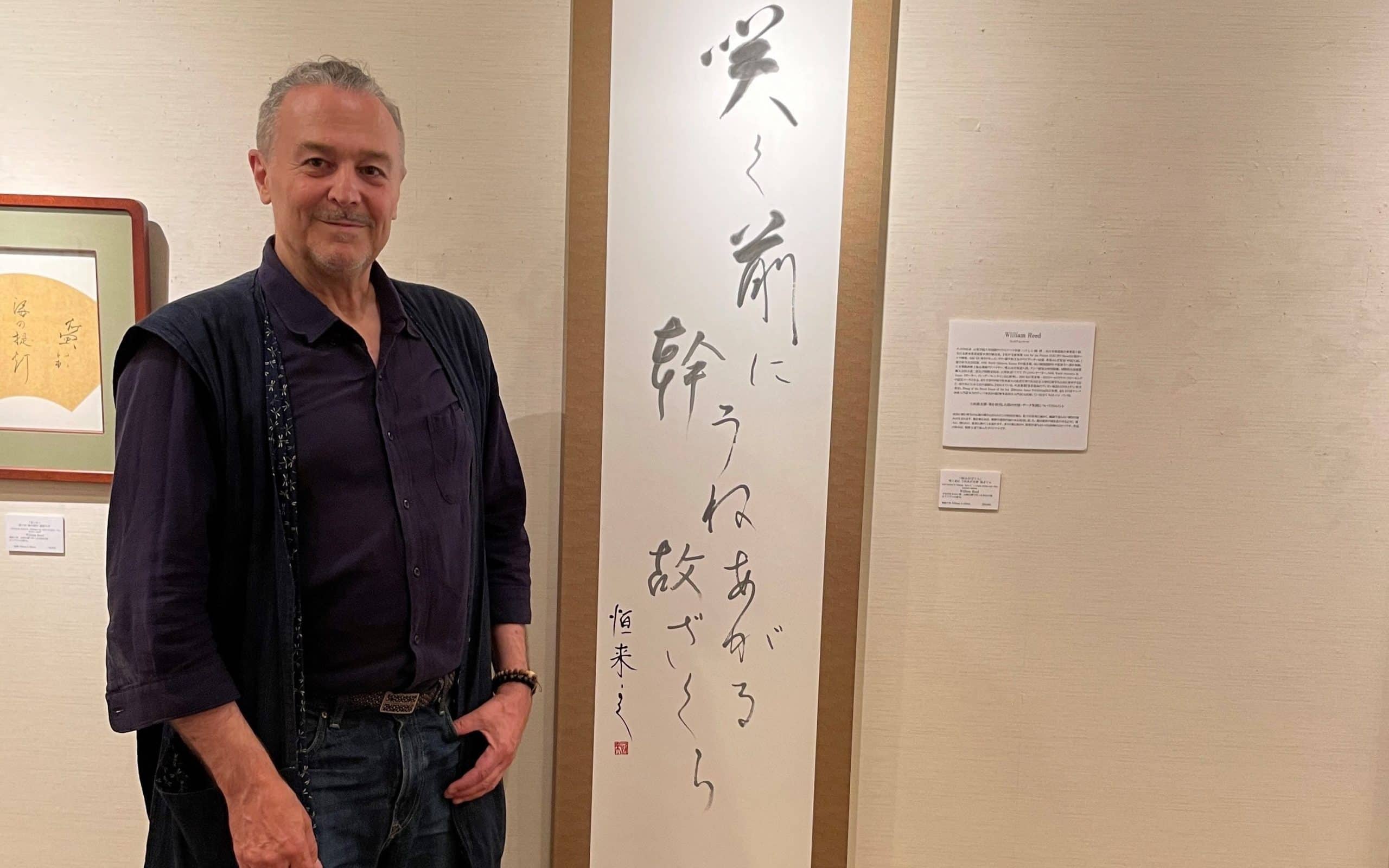
iCLA’s Professor Will Reed joined the art exhibition, Yamatoshika Nikawa Sakuhinten – Byouga to Hozon no Mirai – (大和鹿皮膠作品展 -描画と保存の未来-). The exhibition was held in Keio Plaza Hotel Tokyo from June 11, and finished on June 18. The event is organized jointly by Keio Plaza Hotel and the Japan Cultural Property Support Organization.
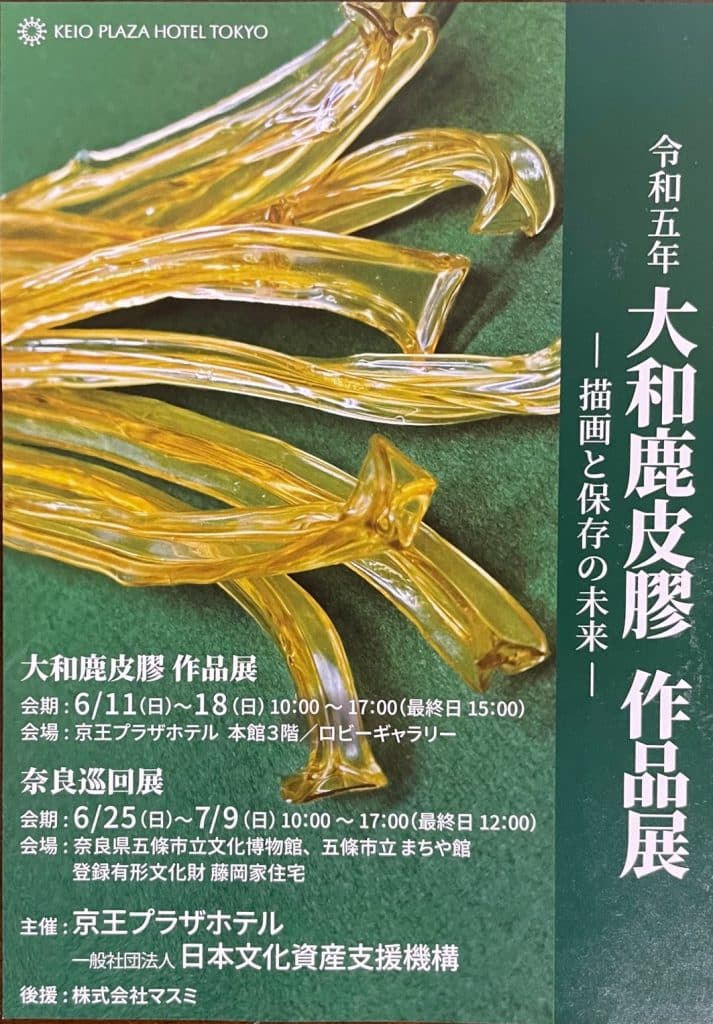
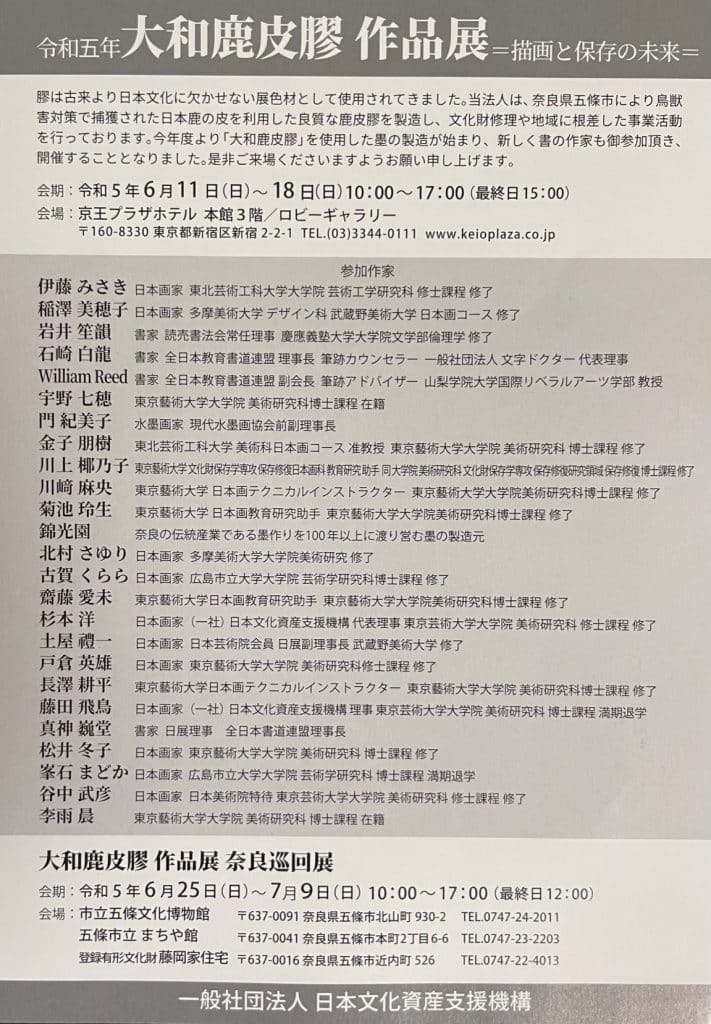
The artwork in the exhibition have been created using ink made with nikawa, which is extracted from the bone marrow of Nara Prefecture’s wild mountain deer. The nikawa or gelatin made from the bone marrow of wild deer is used as a binder for the calligraphy ink. Since ancient times, nikawa has been used as a binder for pigments in Japan.
The Japanese calligraphy artworks on exhibit are Reed’s original haiku composed on the Kumano Trail. The original haiku written and painted by Professor Reed are titled “Ancient Sakura”(故ざくら), “Sunlight filtering through the trees” (木漏れ日), and “Firefly Squid” (蛍いか). Professor Reed is joined by 24 other artists in this exhibition.
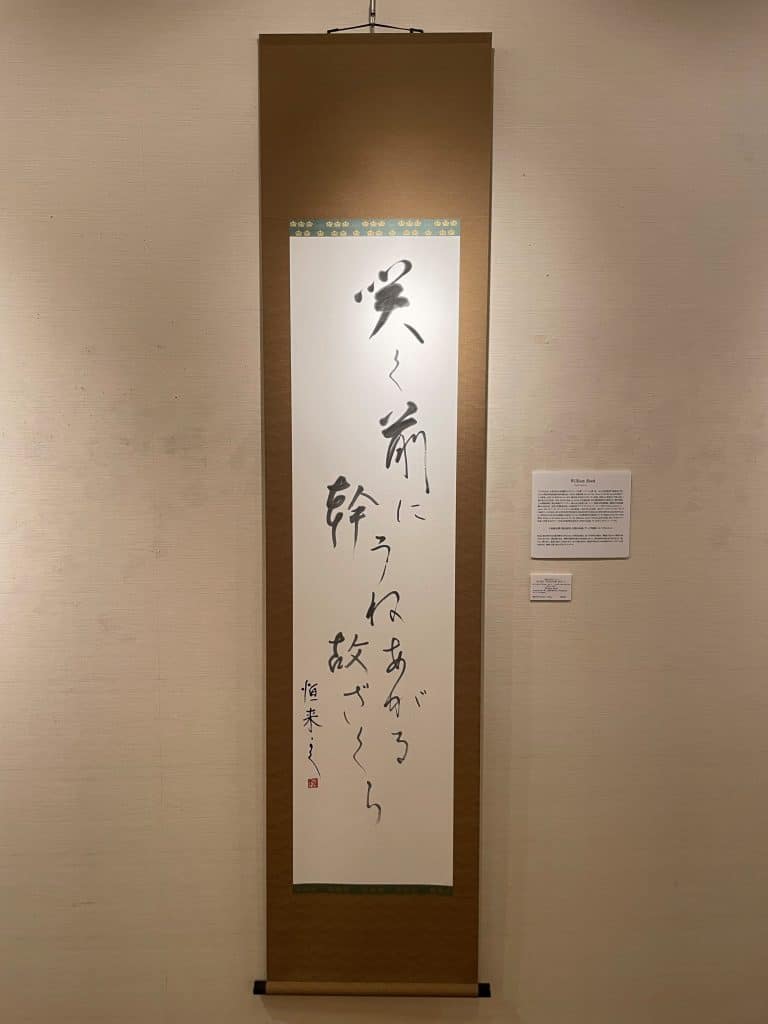
咲く前に うねあがる幹 故ざくら
saku mae ni
uneagaru miki
furu zakura
well before it blooms
how it’s trunk twists and rises
ancient sakura
Soft wool brush, Nara sumi ink, glue of mountain deer, and original haiku.
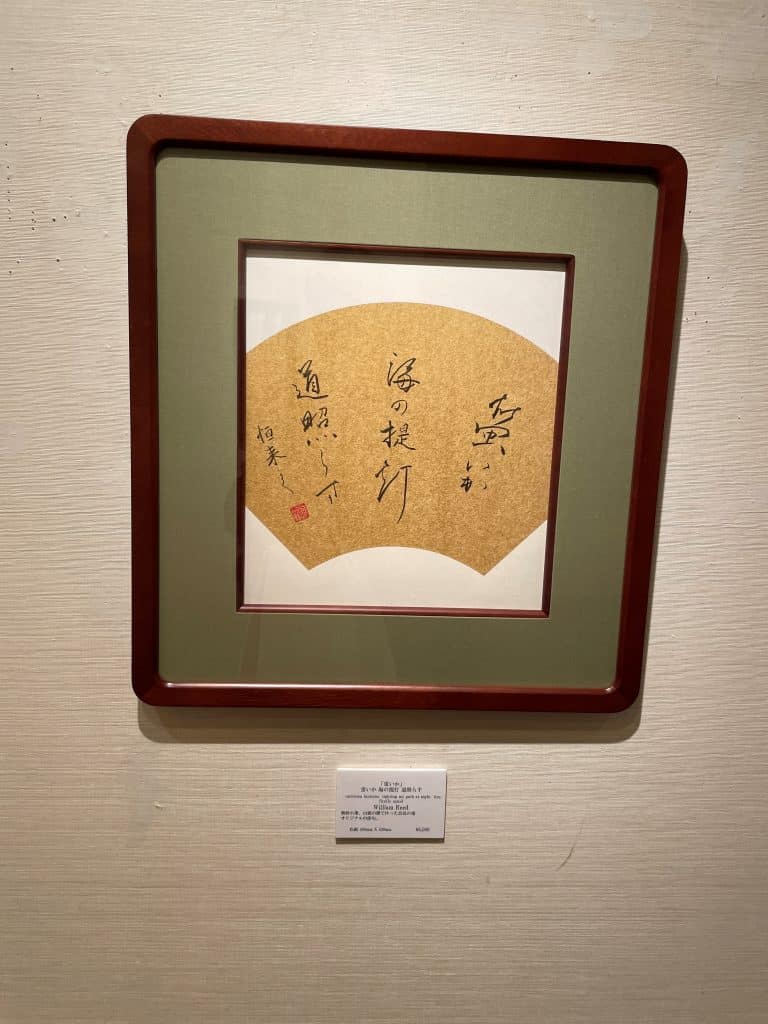
蛍いか 海の提灯 道照らす
hotaru ika
umi no chouchin
michi terasu
undersea lanterns
lighting my path at night
tiny firefly squid
Original haiku written and painted by William Reed
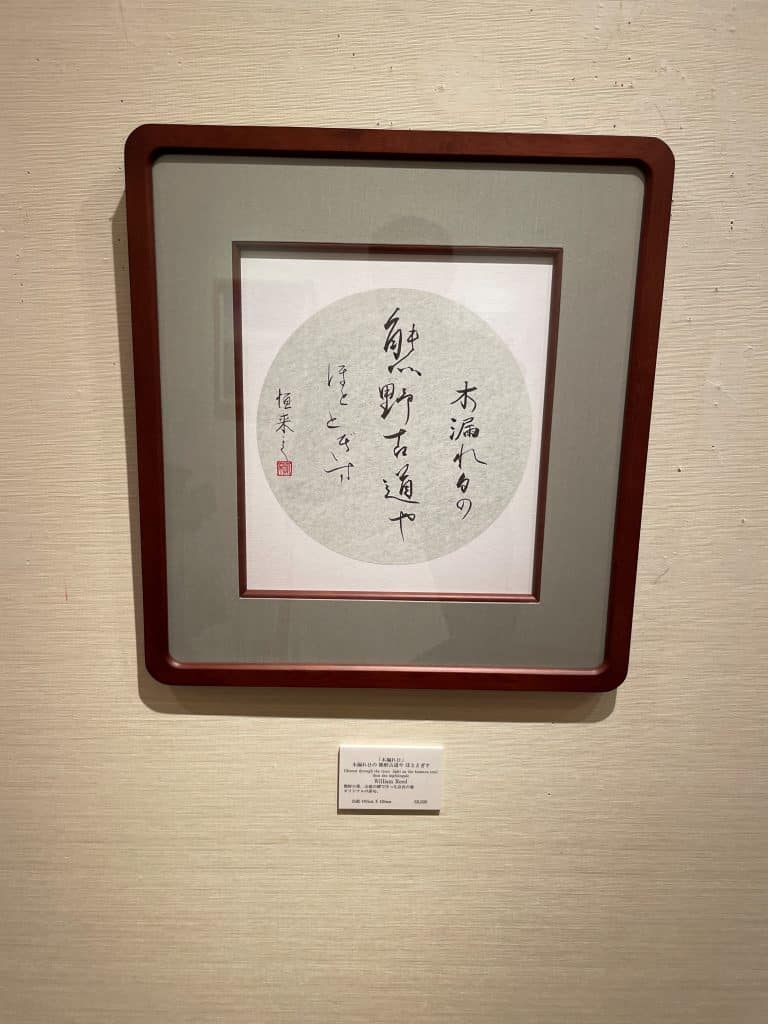
木漏れ日 熊野古道や ほととぎす
komore bi no
kumano kodou ya
hototogisu
filtered through the trees
light on the kumano trail
then the nightingale
Original haiku written with a Kumano small brush in the round silver color of colored paper.
Next, the exhibition will go on tour in Nara, hitting venues like the City Museum of Gojo Culture (奈良県五條市文化博物館), Gojo Machiya Museum (五條市立まちや館), and the Fujioka Family Residence (登録有形文化財 藤岡家住宅).
Professor Will Reed, who is a 10th-Dan in Shodo, has released several books in English about Japanese Calligraphy. His newest book, Song of the Brush, Dance of the Ink: The Path to Self-Discovery Through Japanese Calligraphy was published last year. Reed teaches the course “Calligraphy and Kanji Culture” at iCLA, along with courses in Nanba, Aikido, and Samurai Code and Culture.
